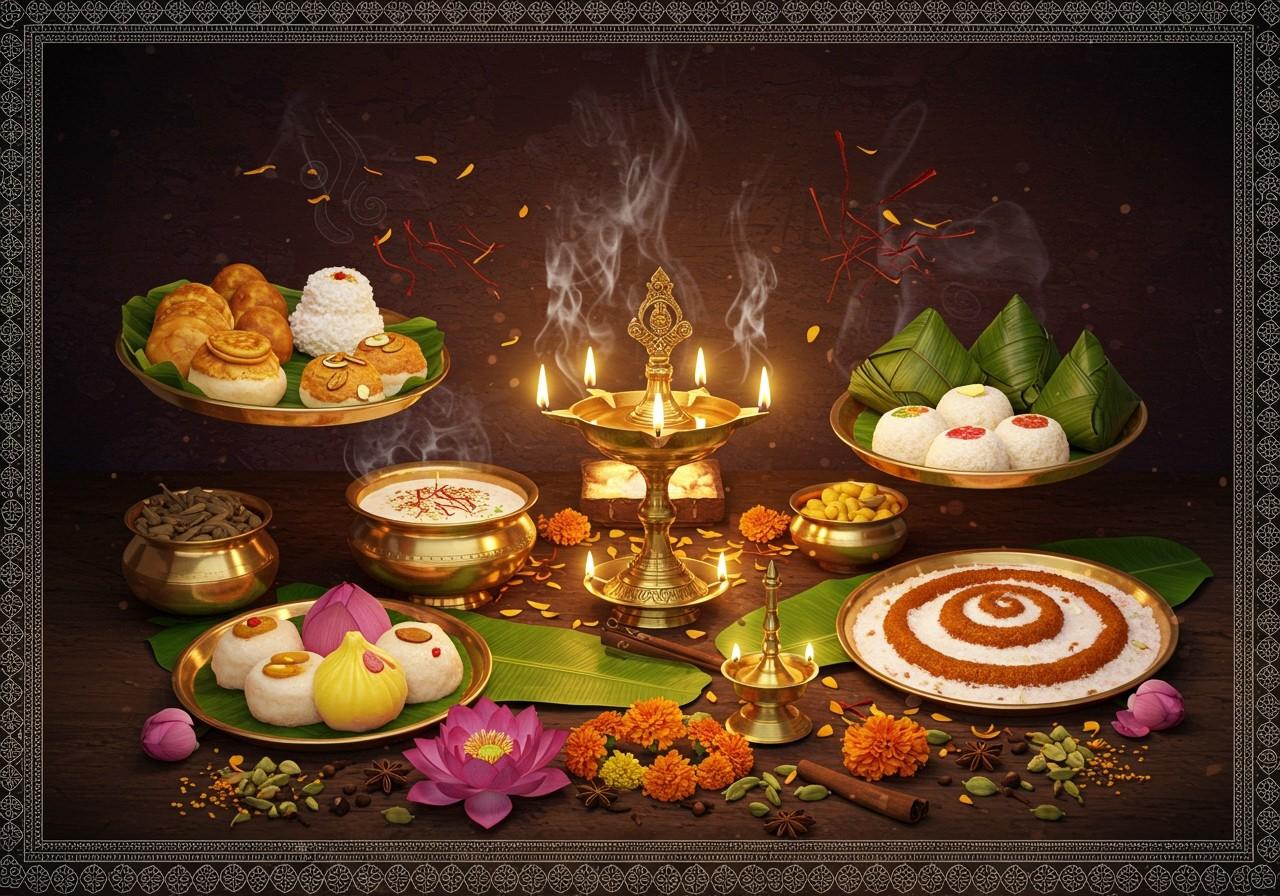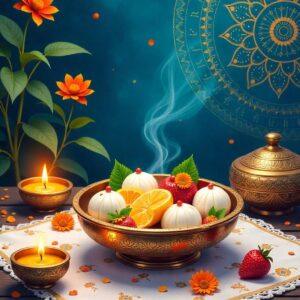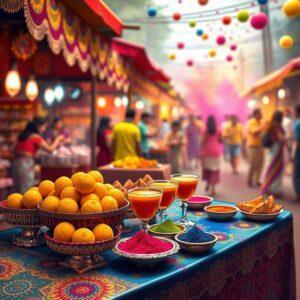
Southeast Asia, a melting pot of cultures and cuisines, offers a vibrant tapestry of culinary traditions, especially during Hindu festivals. These celebrations provide a unique lens into the region’s rich food heritage, where traditional dishes are not merely a source of nourishment but also carry deep cultural and religious significance. This blog delves into the culinary delights of Hindu festival foods in Southeast Asia, exploring traditional dishes, regional variations, and the cultural importance of food in Hinduism.
Traditional Dishes During Hindu Festivals
Hindu festivals in Southeast Asia showcase an array of traditional dishes integral to the celebrations. These dishes are prepared with meticulous care and devotion, often using recipes passed down through generations. Many of these delicacies can be found and conveniently purchased at poojn.in, India’s leading online store for cultural goods and services.
- Pongal: A dish synonymous with the Pongal festival celebrated by Tamil communities, Pongal is made from rice, milk, and jaggery. It symbolizes abundance, prosperity, and is deeply connected to the agricultural cycle, paying homage to the sun and rain gods. This sweet rice dish is a testament to the harmonious relationship between humans, nature, and the divine.
- Modak: A sweet dumpling filled with coconut and jaggery, Modak is traditionally prepared during Ganesh Chaturthi to honor Lord Ganesha. This delicacy is a symbol of devotion and is often offered as prasad to the deity.
- Payasam: This sweet rice pudding, made with milk, sugar, and cardamom, is a common feature during festivals like Onam and Vishu. Its rich flavor and creamy texture make it a beloved dessert across many Southeast Asian communities.
- Murukku: A crunchy, savory snack made from rice flour and urad dal, Murukku is often enjoyed during Diwali. Its intricate spiral shape and satisfying crunch add a festive touch to the celebrations.
- Biryani: This fragrant rice dish, prepared with spices, meat, or vegetables, is often served during celebrations like Navaratri. Biryani is known for its aromatic blend of spices and is a celebratory dish in many cultures.
- Vadai: Savory lentil fritters, Vadai is a staple during many Hindu festivals. These crispy fritters are a popular snack and are often served with chutneys.
- Kesari: A sweet semolina pudding flavored with saffron and cardamom, Kesari is popular during various festive occasions. Its vibrant yellow color and delicate flavor make it a festive treat.
Regional Variations in Cuisine
The culinary landscape of Hindu festival foods in Southeast Asia is diverse, marked by regional variations reflecting the unique cultural influences of each area. The incorporation of local herbs and spices like lemongrass, galangal, and kaffir lime leaves creates distinct flavor profiles.
- South Indian Influence: In Malaysia and Singapore, the Tamil community’s influence is evident in dishes like Pongal, Vadai, and Murukku. These dishes are often adapted to incorporate local ingredients while retaining their traditional essence.
- Balinese Hindu Cuisine: In Bali, offerings such as Lawar (a traditional Balinese salad) and Babi Guling (roast pork) are prepared during festivals like Galungan and Kuningan. These dishes are deeply rooted in Balinese culture and reflect the island’s unique culinary traditions.
- Javanese Hindu Traditions: In Indonesia, the Hindu community in Java celebrates with dishes like Nasi Tumpeng, a cone-shaped rice dish served with various side dishes. This dish symbolizes gratitude and is often prepared for special occasions.
- Thai Hindu Celebrations: Thai Hindu festivals feature unique dishes such as Khanom Tom, a sweet glutinous rice ball filled with coconut. This dessert reflects the influence of Thai culinary traditions on Hindu celebrations.
- Cross-Cultural Influences: The Indian diaspora in Southeast Asia has led to a fusion of local ingredients and traditional Indian recipes, resulting in distinctive festival dishes. This culinary fusion showcases the adaptability and creativity of Southeast Asian cuisine.
Cultural Significance of Food in Hinduism
Food plays a pivotal role in Hindu festivals, symbolizing various aspects of the religion and cultural practices. Sharing meals strengthens community bonds and reinforces the importance of togetherness during these sacred times.
- Prasadam: Food offered to deities during festivals, known as Prasadam, symbolizes devotion and gratitude. This sacred offering is believed to carry divine blessings.
- Ritual Purity: The preparation of festival foods often involves rituals to ensure purity, emphasizing the sacredness of food in Hindu culture. Cleanliness and intention are key components of these culinary practices.
- Symbolic Ingredients: Ingredients like rice, ghee, and jaggery hold symbolic meanings, representing prosperity, purity, and sweetness, respectively. These ingredients are not only flavorful but also add layers of cultural significance to the dishes.
Traditional Puja Ingredients for Southeast Asian Hindu Festivals at Poojn.in
Poojn.in offers a wide selection of authentic puja items essential for Hindu festivals celebrated across Southeast Asia. From pure ghee and offerings to festival-specific items and puja essentials, you’ll find everything you need for your religious ceremonies.
Explore our diverse collection, which includes:
Paddy (धान) – Fresh Selected Paddy Seeds for Puja
Chand Mala – Accessory to Hang from the Deity’s Hands (Paper)
Mangalam Camphor Powder Pouch – 100% Pure Camphor Powder
Cotton Thread – Red, White, Yellow, Black Color (445 Thread)
Kala Til (Krishna Til) – Black Sesame
Visit www.poojn.in today to shop for all your puja needs.
Embracing Tradition Through Culinary Delights
Hindu festival foods in Southeast Asia transcend mere sustenance; they represent a vibrant celebration of rich cultural heritage and deeply rooted traditions. Each recipe, carefully passed down through generations, embodies devotion, love, and reverence for ancestral customs. By partaking in these culinary practices, we honor our heritage, strengthen cultural bonds, and keep the spirit of our festivals alive.


